‘See it, snap it, app it.’
That’s the call from Devon beekeepers as they urge members of the public to keep an eye out for Asian hornets.
The invasive, yellow-legged Asian hornet is a highly aggressive predator of native insects and poses a significant threat to honeybees and other pollinators, such as butterflies, hoverflies and wasps.
‘Insects are having a tough time anyway and this is just one more thing,’ commented Helen Tworkowski from Tavistock Beekeepers.
Speaking in the Bees and Honey Tent at Devon County Show, Helen explained that a nest of Asian hornets can eat 11 dry weight kilos of insects annually.
‘Asian hornets are everybody’s problem and we’re all part of the solution,’ said Helen as she urged members of the public to keep an eye out for the non-native species.
Asian hornets, which are smaller than our native European hornets, measure around 2.5cm-3cm long. They can be identified by their predominantly dark brown or black, velvety body and yellow tipped legs.
So far this year, the National Bee Unit has confirmed 13 credible sightings of Asian hornets and two nests in the UK.
Asian hornets arrived in France in 2004 and the invasive insect population has spread rapidly. A high number of sightings have been recorded in the UK over the past nine years. As well as arriving on UK shores through imported plants, garden items, freight containers or vehicles, it is thought the hornets could also fly across the Channel.
Helen is urging members of the public to look out for Asian hornets. Anyone spotting an insect they think might be an Asian hornet should note the location and get picture evidence before reporting it online, via the Asian Hornet Watch app developed by the UK Centre for Ecology and Hydrology (CEH) or by email [email protected]
‘See it. Snap it. App it,’ Helen recited as she showed off her Asian Hornet Team jacket.
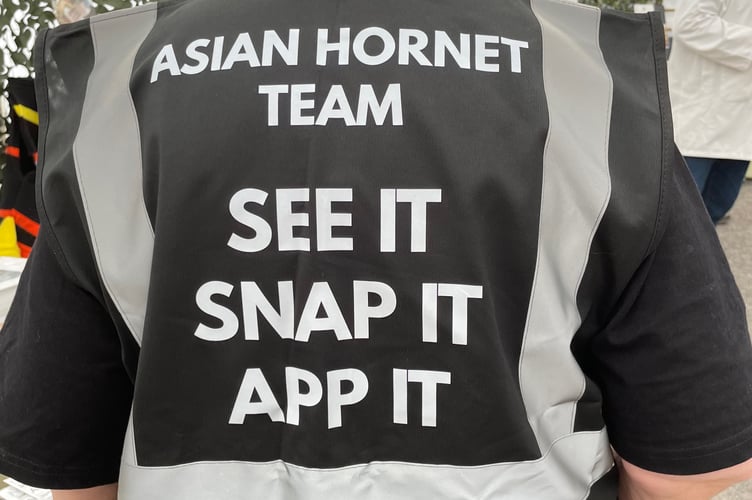
‘Taking a video is better than trying to get a photograph as it is easier to capture the insect rather than trying to get up close and it flying off,’ Helen suggested.
If an Asian hornet is identified, staff from the government Department for Environment, Food and Rural Affairs (DEFRA) and the National Bee Unit will come to locate and remove the nest.
Officials will put out a bait station to trap the Asian hornet and then place a marker on it before releasing it to track the hornet back to its nest. The markers are either a small paint mark or occasionally a string of shiny tinsel type material that makes it easier to see where the dark coloured hornet is flying amongst shady trees.
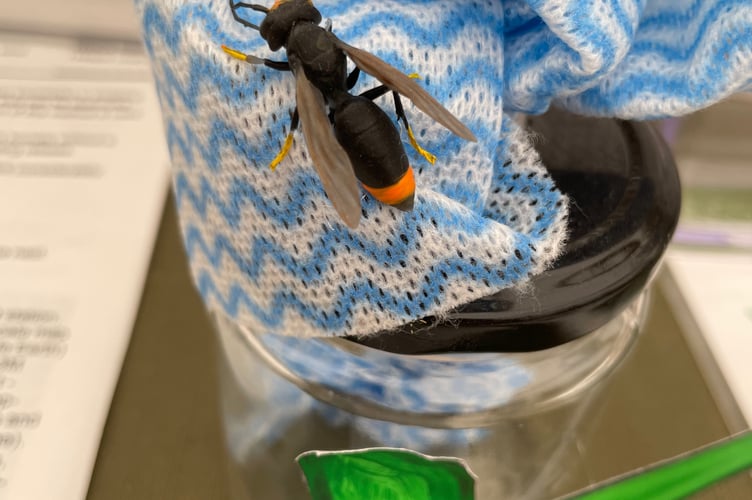
Asian hornet nests are similar to wasps nests, and are often found in trees, among brambles, in cliffs or even down rabbit holes.
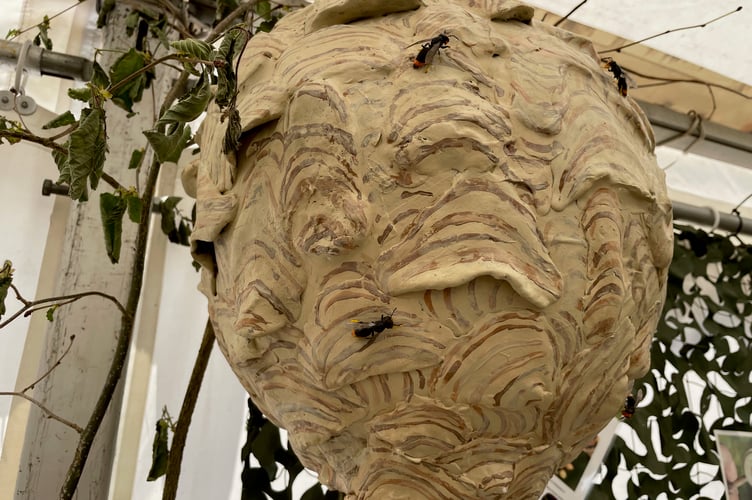
‘Do not disturb or provoke an Asian hornet nest as they will defend it,’ warned Helen.
As a beekeeper, Helen loves insects. ‘Asian hornets are beautiful creatures. They’re not bad. They just don’t belong here, they belong in Asia,’ she concluded.
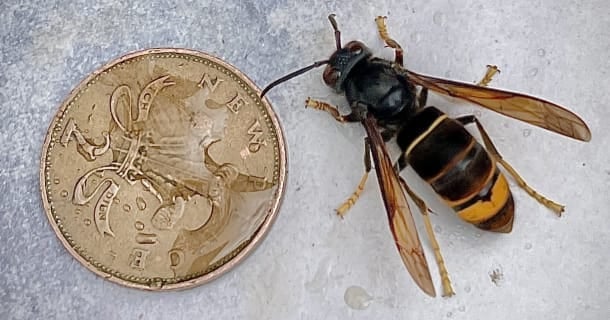
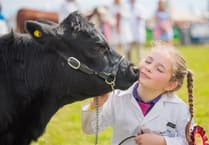

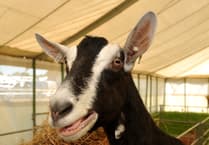

Comments
This article has no comments yet. Be the first to leave a comment.